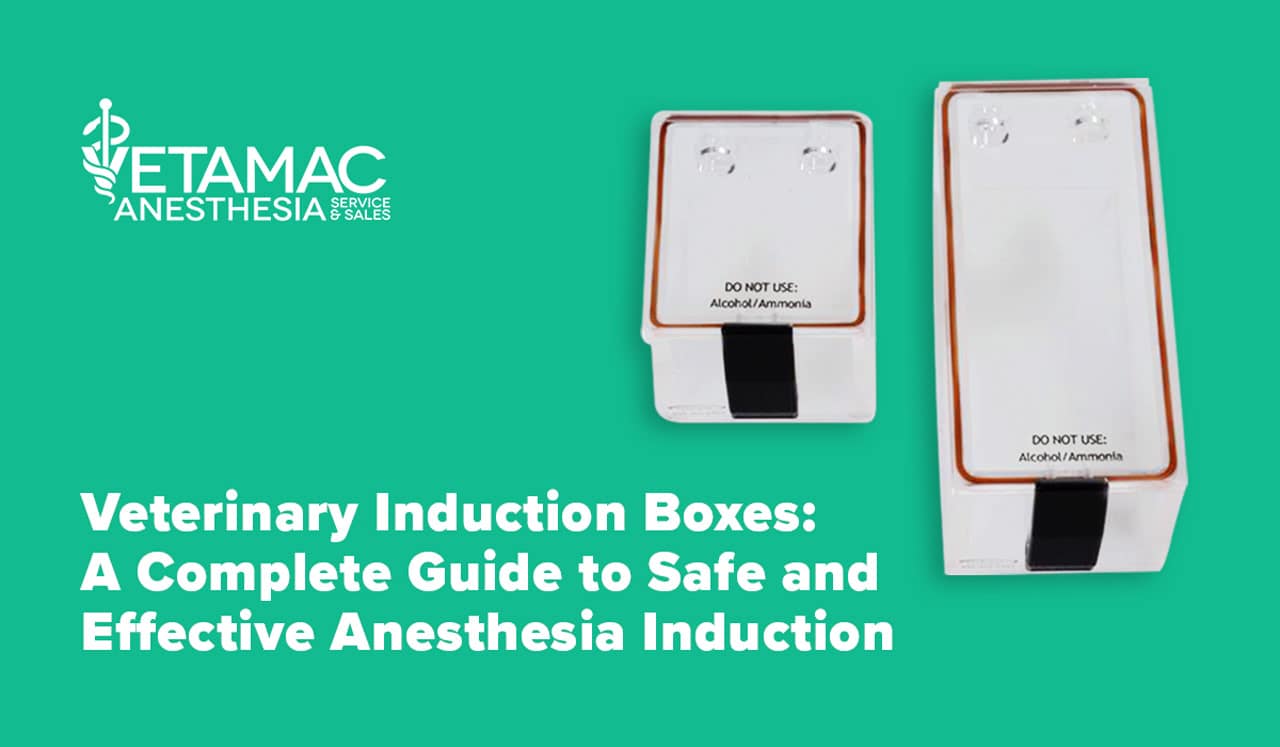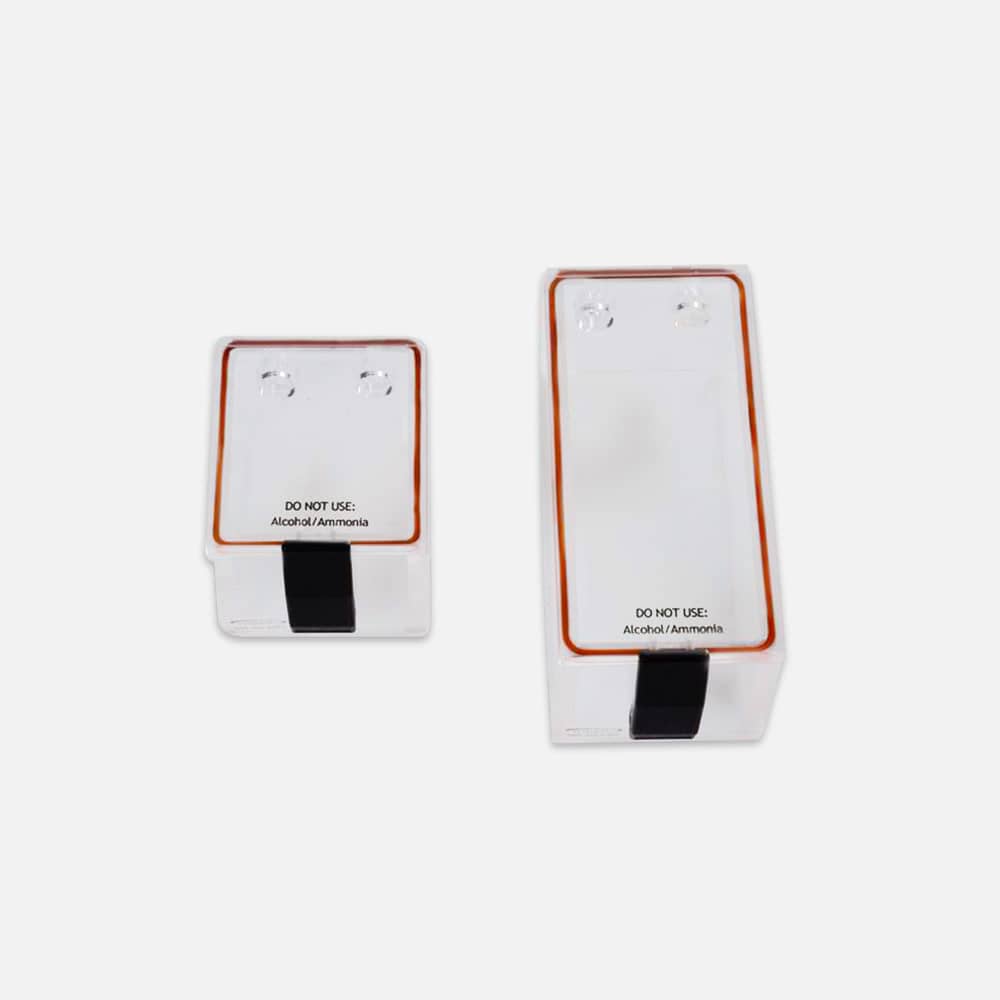Call Us
1 800 334-1583
Veterinary Induction Boxes: A Complete Guide to Safe and Effective Anesthesia Induction

Veterinary induction boxes, also known as anesthesia induction chambers, are essential tools for safely anesthetizing small animal patients, particularly fractious or exotic pets. By allowing controlled delivery of inhalant anesthetics in a contained environment, induction boxes help reduce stress for both the patient and the veterinary team.
In this guide, we’ll cover best practices for using veterinary induction boxes, explore key design features, and offer tips to enhance safety and efficiency during anesthesia induction.
What Is a Veterinary Induction Box?
A veterinary induction box is a sealed chamber designed to safely induce anesthesia in small animals, such as cats, rabbits, and other exotic species. Induction boxes are typically used when direct handling is risky or when premedication is not feasible. These boxes allow for the controlled administration of oxygen and inhalant anesthetics, such as isoflurane or sevoflurane.
- Figure 1 illustrates a properly sealed box. If the box does not form a good seal, fresh gas may not mix with the gas inside, leading to inefficiencies and potential exposure to waste anesthetic gases. As shown in
- Figure 2, a poorly sealed box will allow gas to escape around the lid, failing to create the necessary pressure inside.
- Figure 3 displays the induction boxes that Vetamac recommends for use in clinical settings, ensuring proper sealing and function.
Correct Technique for Effective Induction
Proper technique is critical to achieving a smooth induction with an induction box.
The first step is to know the volume of the box you are using. For example, a typical induction box for an adult cat might have a volume of 15 liters (always check with the manufacturer). This volume directly impacts the oxygen flow rate and the time required to replace the gas.
For a 15-liter box, a flow rate of 4-5 liters per minute is ideal. If the animal occupies 7 liters of space, this means that 8 liters of gas must be replaced. With a flow rate of 4 liters per minute, the time constant (covered in Volume IX, Issue 1 of Vapors) will be 2 minutes, meaning it will take 6 minutes (three time constants) to completely replace the gas in the box.
Smaller animals will take longer to replace the gas in the box. Using low flow rates (e.g., 1-2 liters/minute) can lead to unpredictable results. Additionally, low flow rates in poorly sealed boxes will cause excessive waste gas to escape into the room. High flow rates ensure effective induction but may also increase waste gas exposure if the box is not sealed tightly.
Induction Box Flow Rate & Time Calculator
Enter the details below to calculate your time constant and estimated full gas replacement time:
Vaporizer Settings and Induction Time
The choice of anesthetic agent plays a key role in the time it takes to induce anesthesia. Isoflurane and sevoflurane are the most commonly used agents in induction boxes, but they require different approaches:
- Isoflurane is an irritant to the respiratory membranes, so it’s important to gradually increase the vaporizer setting in increments of 0.5-1.0% every few seconds to minimize irritation and prevent patient discomfort.
- Sevoflurane is less irritating to the respiratory system, but it’s still important to avoid excessive concentrations (7-8%) at the start of induction.
Minimizing Waste Gas Exposure
One of the challenges of using induction boxes is the exposure to waste anesthetic gases during both induction and recovery. After induction, it’s best to have the animal slightly deeper than the desired anesthetic depth and use the flush valve to flush pure oxygen into the box before removing the animal. This reduces the amount of residual anesthetic gas in the box, minimizing exposure to waste gases during the removal process.
Even after the animal is removed from the box, anesthetic gases can linger in the fur, so it’s important to consider this secondary exposure source when handling the animal.
Conclusion
Induction boxes are a valuable tool in veterinary anesthesia, particularly for animals that are difficult to restrain. To achieve the best results, it’s crucial to use a properly designed box with appropriate sealing and to follow correct induction techniques. By ensuring proper flow rates, vaporizer settings, and waste gas management, you can minimize risks and enhance the safety of your anesthesia practices.
Explore Vetamac’s range of veterinary induction boxes and anesthesia accessories here to optimize your practice’s anesthesia protocols.







